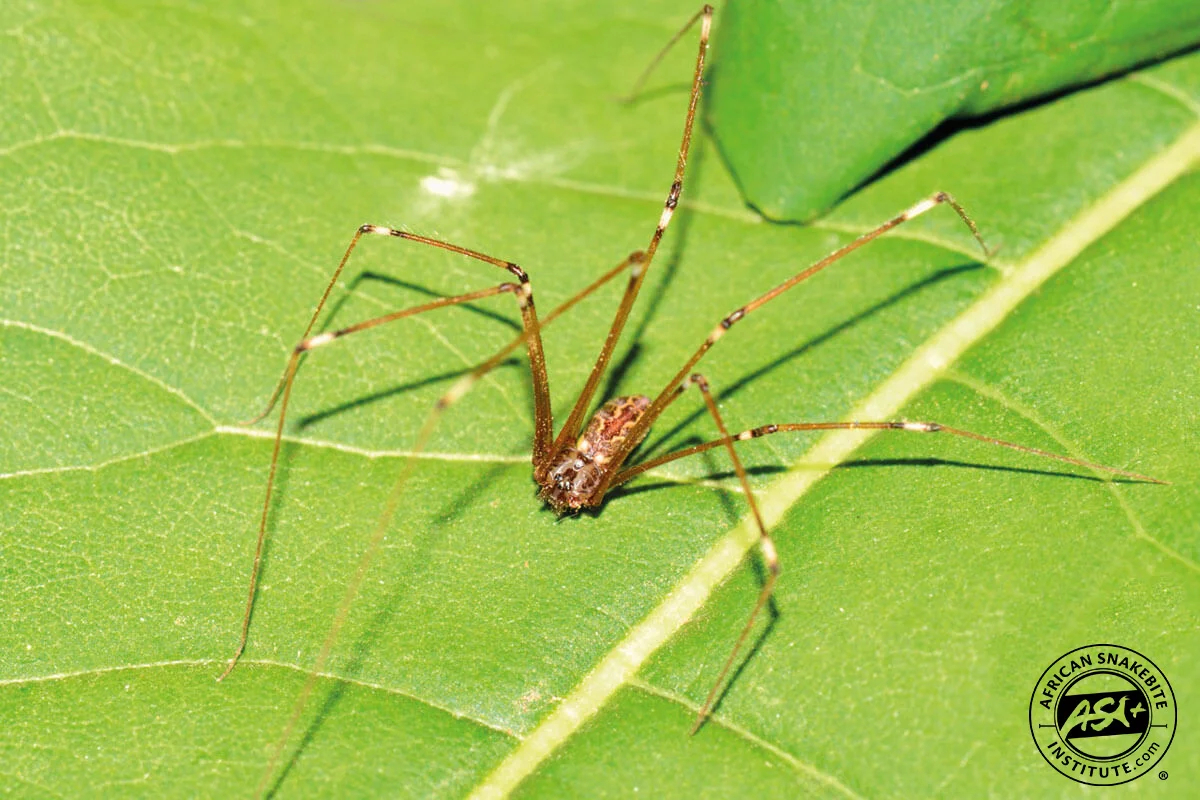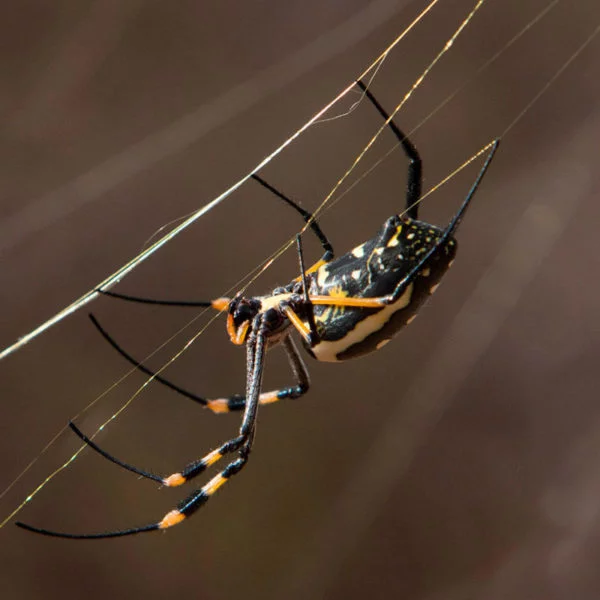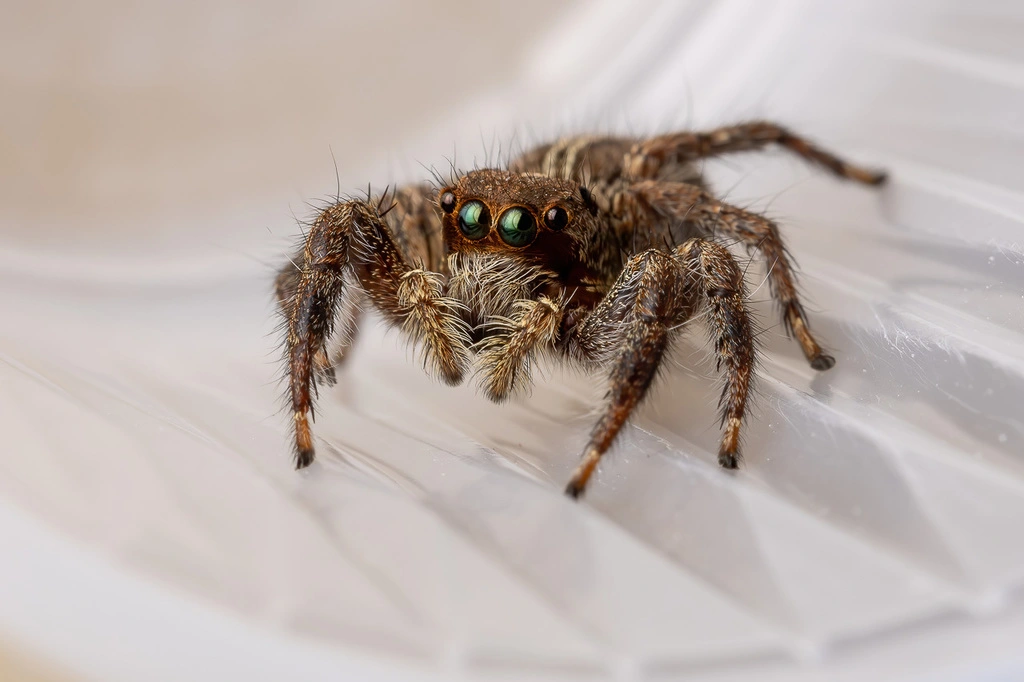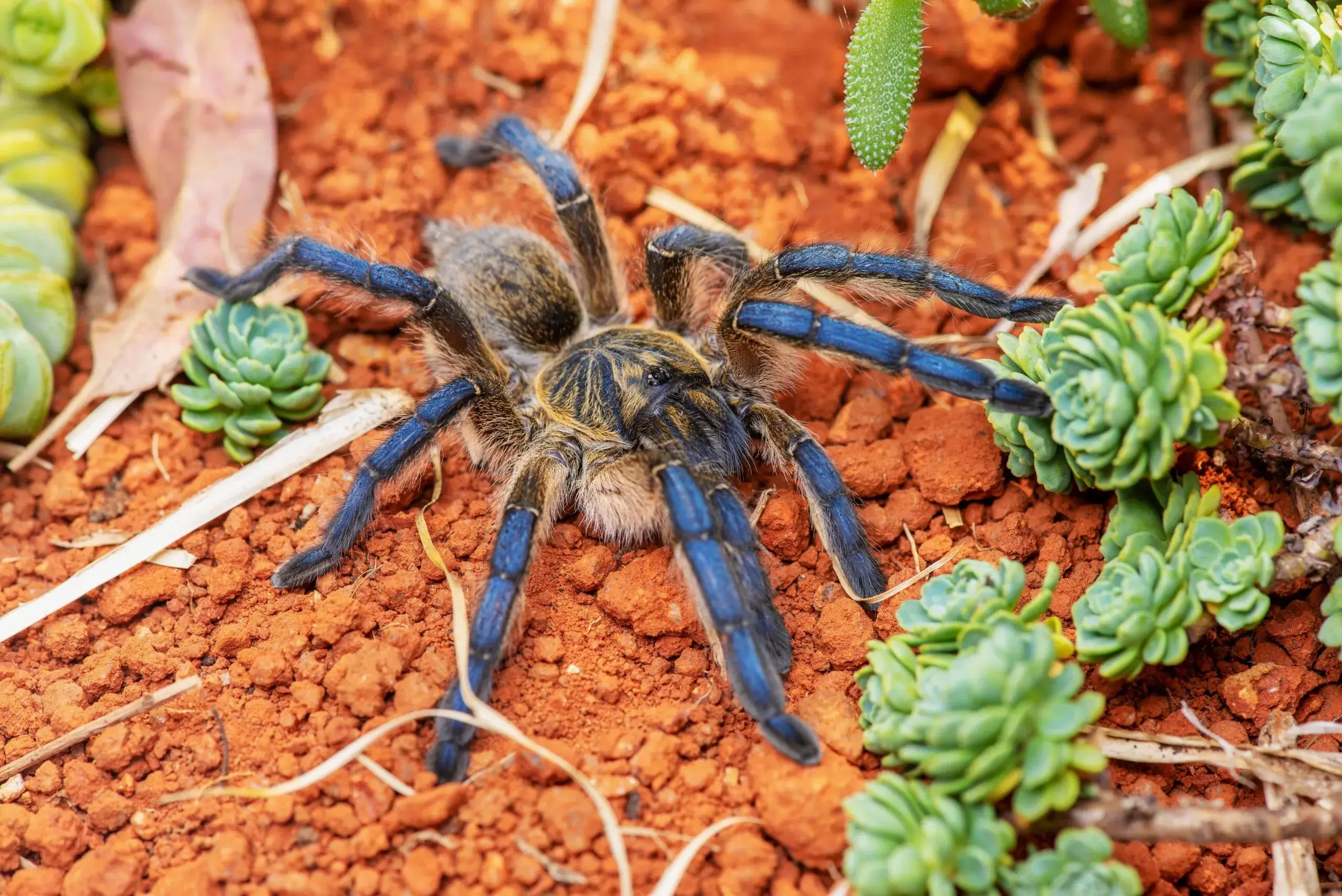South Africa is home to over 3,000 known species of spiders. Though feared and maligned by many, they're an integral part of natural ecosystems and play an invaluable role in controlling pests. Unfortunately for arachnophobes, many species can be found indoors, as some areas around the home make ideal habitats. But try not to worry – of all the spiders commonly found in South Africa, only a few are harmful to humans. Let’s look at the most common specimens you’re most likely to find.

Daddy Long Legs - Smeringopus natalensis (Not Dangerous)
A common spider in the house, shed or garage. They are small spiders with very long thin legs spread out to about the size of a golf ball. They hide in dark, unused areas of human dwellings where they build a messy web with a couple of spiders in each web. They walk awkwardly across the floor, with a rocking motion, and sometimes get trapped in baths and basins. Despite the myths, these spiders are completely harmless to humans and pets and don’t possess strong venom. They hunt insects in the house and are useful to have around.

Common Rain Spider - Palystes superciliosus (Not Dangerous)
The Common Rain Spider is part of the genus known as Huntsman Spiders due to their speed and method of hunting. Instead of weaving webs, these arachnids hunt for insects found in plants and foliage. Additionally, before it rains, they frequently enter houses where they prey on geckos or lizards, thus the common name.
Despite their fearsome appearance, Common Rain Spiders have a very unusual predator – the Pompilid Wasp. These wasps paralyze Rain Spiders with their bite and then drag them to their nests. They lay their eggs on the paralyzed spider and close the nest, and the small larvae feed on the paralyzed Rain Spider as they grow up.
When threatened, the Common Rain Spider raises its legs to intimidate predators. They also release toxins when they bite. Thankfully, their venom isn’t very dangerous for humans, but it does cause burning and swelling.

Banded-legged Golden Orb Spider - Trichonephila senegalensis (Not Dangerous)
The Banded-legged Golden Orb-web Spider is usually found in South Africa in warm, humid gardens, open forests, grasslands, and savannas. These spiders weave beautiful, sturdy, golden-coloured webs. The spider’s name refers to its joints’ characteristic golden yellow colour. Females are bright yellow with a dark pattern in the middle and reach 30 to 40 mm (1.1-1.5 inch). Males have the same colour pattern but are usually paler and ten times smaller than females.
They can regulate the amount of pigment and stickiness in their webs to adapt to their environment. Interestingly, the females keep food supplies on their webs. Up to 15 insects are carefully arranged and wrapped in silk to prevent deterioration of the prey.
Male Banded-legged Golden Orb-web Spiders often linger near the edge of the female’s web. When he is ready to mate, he will tap on the edge of the web to ensure that the female is in a good mood and bring her food as courtship. Then, while the female is eating, he will approach quietly, inject his semen into her abdomen and flee as soon as possible to avoid being eaten.

Bark Spider - Genus Caerostris (Not Dangerous)
Bark Spiders are a genus of orb-weaving spiders in South Africa, most commonly found in tropical climates. They get their name from their incredible effective camouflage, which helps them blend into tree bark as they climb and move throughout the forest or bush.
Females are black or brown, with long white hairs on the upper body. Some individuals are spotted with red, yellow, or orange. Males have a lighter colour, usually without any spots. In addition, they are considerably smaller, one-third of the length of an average female.
The silk that Bark Spiders produce is the toughest biological material humans have ever studied, twice as strong as any other spider silk known to science. And not only do Bark Spiders have the strongest silk, but they also build the largest webs. This impressive species holds the record with a surface area of up to 2.8 square meters. Perhaps the most fascinating thing about Bark Spiders is the unique location of their webs. They construct them directly above a river or stream, so insects flying above the water are snared in its web.

Pantropical Jumping Spider - Plexippus paykulli (Not Dangerous)
Pantropical Jumping Spiders live near buildings, in citrus groves, and in cotton fields. They cleverly spend time around light sources that attract insect prey. Unlike many spiders in South Africa, Pantropical Jumping Spiders do not construct a web. Instead, they construct silken retreats, often in the corner of a ceiling or other elevated position. They use this retreat to rest and hide between hunting. Although they look incredibly dangerous, Pantropical Jumping Spiders will only bite if handled roughly. Their bites are relatively harmless and may resemble a bee sting or be even milder.
Females are brownish grey and darker on their back and head, especially around the eyes, and have a broad tan stripe that extends onto the abdomen. Males are black with a broad white central stripe and two white spots near the rear of the abdomen. Adult females range from 9 to 12 mm long, while adult males range from 9 to 11 mm long.

Southern Baboon Spider - Subfamily Harpactirinae (Not Dangerous)
Baboon spiders are a subfamily of tarantulas broadly present on the African continent. Around nine genera and over one hundred species are present in South Africa.
This species reaches a maximum length of 15 cm, including the legs. Their colouring varies from light brown to dark brown or black. Some species can also have grey, beige, orange, or light-yellow colours with hair covering their legs and bodies.
These ground-dwelling spiders use their fangs and chelicerae (pincer-like mouth appendages) to dig burrows that they line with silk. Their natural habitats are savanna forests, arid scrublands, and grasslands. They are vicious hunters, preying on insects, small rodents, reptiles, and just about anything else they can take down. Baboon Spiders lift their front legs to appear bigger and more intimidating when disturbed or threatened. If the threat continues, they will bite and release venom.
The fangs of a Baboon Spider can be more than a centimetre long. As you can imagine, a bite from one can be very painful, and their venom can cause localized swelling. However, it doesn’t pose a major health concern to humans.
Join Nhongo on a safari to the Kruger National Park to learn more about these and other fascinating creatures!
